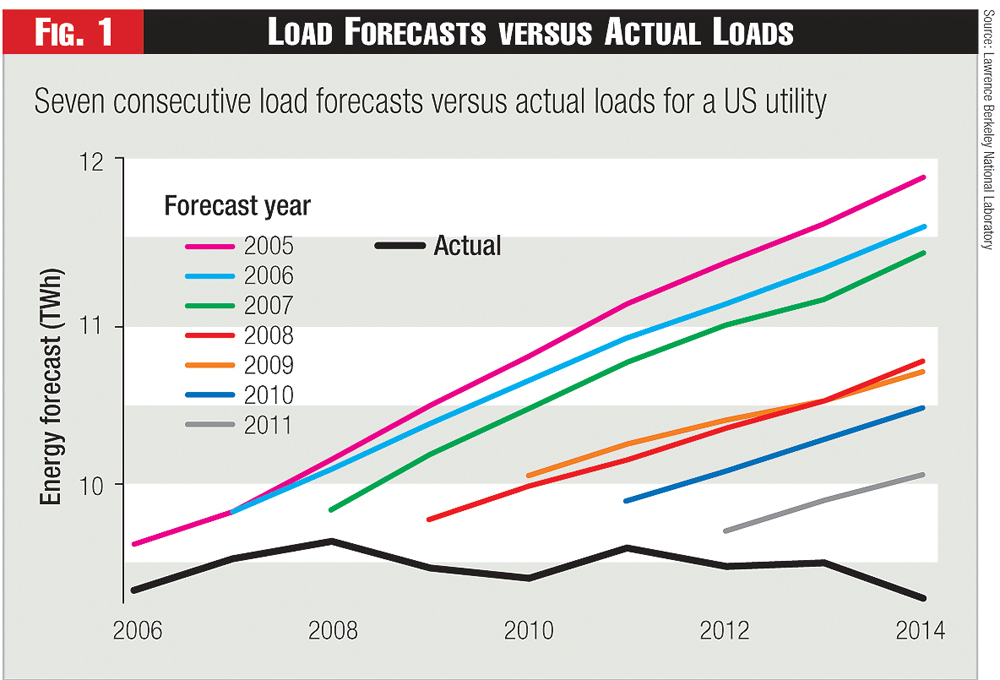Load forecasting errors have grown to an unprecedented level, according to authors Ken Seiden and Brian Eakin from Navigant, writing in the October issue of Public Utilities Fortnightly.
 In “Solving the Utility Load Forecasting Conundrum,” they argue the time has come for a more comprehensive approach to load forecasting that can address the increasing complexities of the Energy Cloud. An alternative to the current econometric forecasting paradigm is needed.
In “Solving the Utility Load Forecasting Conundrum,” they argue the time has come for a more comprehensive approach to load forecasting that can address the increasing complexities of the Energy Cloud. An alternative to the current econometric forecasting paradigm is needed.
New factors have entered the picture, the authors say. They quote their colleagues, Mackinnon Lawrence and Jan Vrins: “The prolific rise of renewables and distributed energy resources, behind-the-meter smart devices, digital infrastructure, advanced controls and analytics, and changing customer demands are ushering in a new era of highly networked power…we call this the Energy Cloud.” (Jan Vrins spoke at APPrO’s recent conference in November, in Toronto. See articles elsewhere this issue.)
In addition, the concept of merely segmenting customers into residential, commercial, and industrial classes needs a much finer resolution to appropriately handle the proliferation of choices customers enjoy today.
But solving the load forecasting conundrum “does not require unattainable data or the invention of new analytical techniques.” Instead, the authors say, “utility load forecasters need to begin thinking with a competitive mindset like our counterparts in telecom, financial services, retail trades, and most other industries.” The focus of traditional forecasting models is an individual end use, with the emphasis on the equipment, not the customer.
